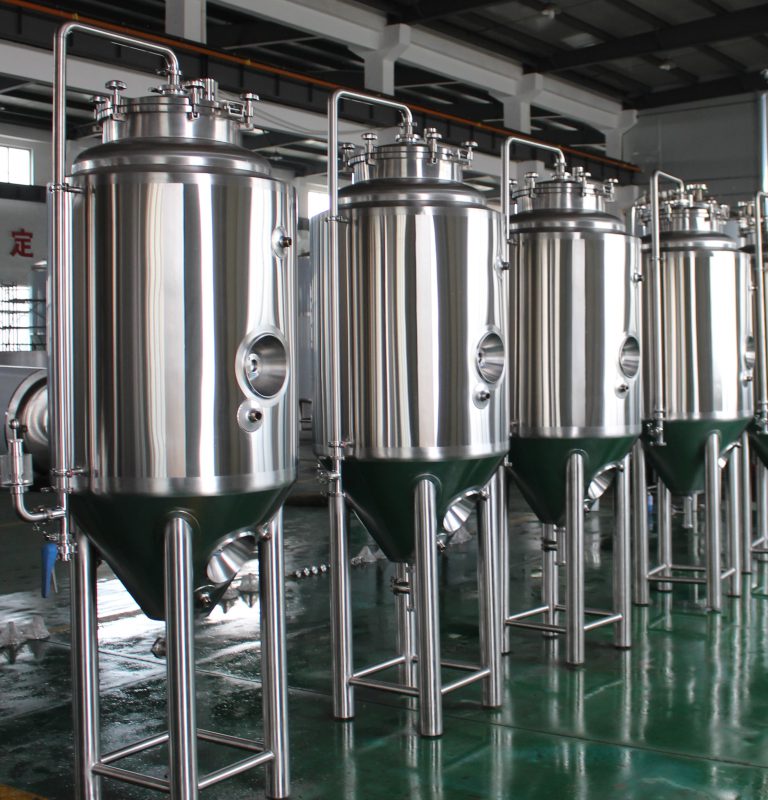Einführung

In der dynamischen Welt der Brauereibetriebe sind Effizienz und Qualität von größter Bedeutung. Unter den verschiedenen Faktoren, die den Brauprozess beeinflussen, ist das Hefemanagement ein entscheidendes Element. Hefezuchttanks spielen eine entscheidende Rolle bei der Optimierung des Brauereibetriebs, indem sie eine konstante Versorgung mit gesunden Hefezellen gewährleisten, die für die Gärung unerlässlich sind. Dieser Artikel befasst sich mit der Bedeutung von Hefezuchttanks in Brauereien und untersucht, wie sie zur Verbesserung der Produktivität und Produktqualität beitragen.
Verständnis Hefe-Vermehrungstanks
Hefezuchttanks sind spezielle Behälter, die das Wachstum und die Erhaltung von Hefekulturen erleichtern. Diese Tanks bieten eine Umgebung, die die Hefevermehrung fördert, sodass Brauereien ihre Hefestämme effizient züchten und vermehren können. Durch die Kontrolle von Faktoren wie Temperatur, Sauerstoffgehalt und Nährstoffversorgung können Brauereien das Hefewachstum und die Vitalität in den Zuchttanks optimieren. Dieser Prozess ermöglicht die Herstellung von hochwertigem Bier mit den gewünschten Geschmacksprofilen und Gärungseigenschaften.
Vorteile von Hefe-Vermehrungstanks
Der Einsatz von Hefe-Propagationstanks bietet Brauereien mehrere Vorteile:
- Kosteneffizienz: Durch die eigene Hefevermehrung reduzieren Brauereien ihre Abhängigkeit von externen Hefelieferanten, was im Laufe der Zeit zu Kosteneinsparungen führt.
- Qualitätskontrolle: Die Haltung von Hefekulturen in kontrollierten Vermehrungstanks gewährleistet eine gleichbleibende Gärleistung und Bierqualität.
- Flexibilität: Brauereien können Hefevermehrungsprotokolle an bestimmte Biersorten und Produktionspläne anpassen und so die Flexibilität des Braubetriebs erhöhen.
- Nachhaltigkeit: Durch die Minimierung des Bedarfs an externer Hefebeschaffung werden die transportbedingten CO2-Emissionen reduziert und so zur Erreichung von Nachhaltigkeitszielen beigetragen.
- Risikominimierung: Durch die Kultivierung und Lagerung von Ersatzhefekulturen können Brauereien das Risiko von Gärungsproblemen aufgrund hefebedingter Probleme verringern.
Implementierung und Wartung
Für die erfolgreiche Implementierung und Wartung von Hefevermehrungstanks müssen verschiedene Faktoren beachtet werden:
- Geräteauswahl: Die Wahl der geeigneten Größe und des geeigneten Designs der Vermehrungstanks auf Grundlage des Produktionsvolumens und der Hefestammeigenschaften ist von entscheidender Bedeutung.
- Hygieneprotokolle: Strenge Hygieneverfahren sind unerlässlich, um Kontaminationen zu verhindern und die Gesundheit der Hefe zu erhalten.
- Überwachungsparameter: Regelmäßige Überwachung von Temperatur, pH-Wert, Zellzahl und Lebensfähigkeit gewährleistet optimales Hefewachstum und Vitalität.
- Vermehrungstechniken: Einsatz geeigneter Vermehrungstechniken, wie z. B. Batch- oder kontinuierliche Vermehrung, je nach den Anforderungen der Brauerei und den Eigenschaften des Hefestamms.
- Aus- und Weiterbildung: Durch Schulungen des Brauereipersonals im Umgang mit Hefe und im Tankbetrieb werden die Betriebseffizienz und die Qualitätskontrolle verbessert.
Vergleich von Batch und Continuous Hefevermehrungsmethoden

Diese Tabelle bietet eine vergleichende Analyse von Batch- und kontinuierlichen Hefevermehrungsmethoden und hebt Unterschiede in Bezug auf Ausrüstung, Investition, Arbeitsaufwand, Vermehrungszeit, Flexibilität, Kontaminationsrisiko und Skalierbarkeit hervor. Brauereien können die Methode wählen, die ihren Betriebs- und Produktionsanforderungen am besten entspricht.
| Parameter | Batch-Weitergabe | Kontinuierliche Ausbreitung |
|---|---|---|
| Komplexität der Ausrüstung | Mäßig | Hoch |
| Erstinvestition | Untere | Höher |
| Arbeitsbedarf | Intermittierend | Kontinuierlich |
| Ausbreitungszeit | Länger (normalerweise 1–2 Tage) | Kürzer (kontinuierlicher Prozess) |
| Flexibilität | Begrenzt (Stapelverarbeitung) | Hoch (Kontinuierliche Verarbeitung) |
| Kontaminationsrisiko | Mäßig | Höher (kontinuierlicher Fluss) |
| Skalierbarkeit | Begrenzt (Chargengrößen) | Hoch |
Abschluss
Hefe-Vermehrungstanks spielen eine entscheidende Rolle bei der Optimierung des Brauereibetriebs und bieten Vorteile wie Kosteneffizienz, Qualitätskontrolle und Flexibilität. Durch Investitionen in die richtige Ausrüstung, die Implementierung wirksamer Protokolle und die Förderung einer Kultur der kontinuierlichen Verbesserung können Brauereien das Potenzial von Hefezuchttanks nutzen, um ihre Brauprozesse zu verbessern und den Verbrauchern außergewöhnliche Biere zu liefern.
Häufig gestellte Fragen
F: Kann in diesen Tanks jeder beliebige Hefestamm vermehrt werden?
A: Die meisten Hefestämme können mit geeigneten Techniken vermehrt werden, für manche sind jedoch spezielle Bedingungen oder Überlegungen erforderlich. Es ist wichtig, Hefelieferanten oder Brauexperten zu konsultieren, um sich über geeignete Vermehrungsmethoden für verschiedene Hefestämme beraten zu lassen.
F: Wie oft sollte Hefe-Vermehrungstanks gereinigt werden?
A: Die Reinigungshäufigkeit hängt von der Nutzung und den Hygieneprotokollen ab. Normalerweise sollten Tanks zwischen jedem Vermehrungszyklus gründlich gereinigt und desinfiziert werden, um Verunreinigungen vorzubeugen und die Gesundheit der Hefe zu erhalten.
F: Wie hoch ist die typische Lebensdauer von in diesen Tanks vermehrte Hefe?
A: Bei richtiger Handhabung und Lagerung kann Hefe, die in speziellen Tanks gezüchtet wird, mehrere Generationen lang lebensfähig bleiben. Eine regelmäßige Überwachung der Zelllebensfähigkeit und der Gesundheitsindikatoren kann dabei helfen, zu bestimmen, wann Hefekulturen aufgefrischt oder ersetzt werden müssen.

